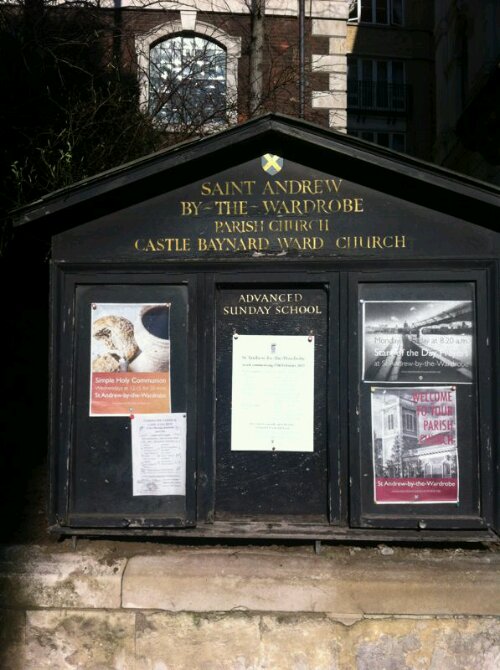Good morning all. It’s the return of Rambler5319 for his Wednesday guest post. Enjoy!
I was thinking again about LLM’s post last Sunday and a few of the replies. Time is one of those things we can’t stop happening. It’s also one of those things that people seem to try not to think about too much: the fact that it’s getting less every day we’re alive. There are plenty of analogies about life being a never ending circle. Now it is really only never-ending when we speak about it in general terms: people and animals are always being born whilst others are dying so there is a cycle of life and death. However for us as individuals time is linear: it is a straight line from conception to last breath. Try as we may we can’t stop it. We can try and stop ourselves displaying the signs of aging by maybe dressing in a younger way, maybe talking younger and so on but no matter what we do we are the age we are. We can try and fool ourselves but if you’ve lived for 20/30/40/50 or however many years – you are that old.
Many singers have touched on the subject of time. A number of hit records have covered the idea of it and what it means to us. (Apologies for the selection as apart from one the rest are all from my own collection and also the number of vid clips.)
There is no such place as Tír na nÓg (The Land of Eternal Youth)! No matter how many times Van Morrison, on his album No Guru, No Method, No Teacher tells us we can walk there – WE CAN’T. Likewise Xanadu, Valhalla & Nirvana all sound great – but real? NO. They make a good subject for a song; remember Olivia Newton-John (& ELO) topped the UK charts in 1980 singing about Xanadu. I think the expression is “In your dreams” and that’s where they’ll stay. Nice diversion for 3 minutes but if you and I can’t go there don’t spend too much time looking for & thinking about them.
In 1969 Joni Mitchell wrote the song which became the theme for the Woodstock Festival. It was just called Woodstock & covered by a number of other artists including one by Matthews Southern Comfort who topped the UK charts with their version.
http://www.youtube.com/watch?v=pyTUF5gP2KE
(Check out the two nuns walking past the camera.)
In one verse Mitchell wrote that she didn’t know who she was but that life is for learning. In 1970 she sang about us being “captive the carousel of time” on her Ladies of the Canyon album; but we’re not are we? We’re not on a merry-go-round, we’re on a train and at some point we will have to get off. We can’t take any luggage with us but those still on the train will open our cases and divide up the things we had with us! Others will stay on because they’re not getting off at the same place.
Eva Cassidy (sadly no longer with us), along with many others, sang about life being like getting on a train. Here’s the clip
http://www.youtube.com/watch?v=J8W9rPxxnP4
A 25 year old Paul McCartney, on The Beatles’ Sgt Pepper album (1967), famously sang about when he would be older losing his hair. He asked would he still be needed when he got to 64.
Booker T. & the MGs recorded an instrumental called Time is Tight on Stax Records. It made no.4 in the UK charts back in 1969. Here’s a live vid:
http://www.youtube.com/watch?v=nbBcXvKvB08
In 1964 The Rolling Stones sang Time Is On My Side but of course ultimately it isn’t is it? At some point you might not have much to do so time seems to go slowly. It does that when you’re looking forward to something you say you can’t wait for doesn’t it?
(In 1990 Kim Wilde had a song called “Time” and she sang about something so good it was worth waiting for.) Sometimes you just want time to go quicker so you can have that something without having to go through the waiting period. (If we want things we can’t afford we don’t wait till we have enough money, we borrow the money and pay it back later; you can’t do that with time.)
I suppose one of the best songs about time is the one by Pink Floyd on their 1973 album Dark Side of the Moon just called Time. Sales of Dark Side of the Moon, since its release 40 years ago, are estimated at 50 million (just over 1 million per year)! In the US it is the top selling album of all time (excluding compilations) with 15 platinum discs (meaning certified total of 15 million sales, although it is believed the real figure is much higher). Curiously it held the no.1 spot for just 1 week but stayed in the charts for 741 weeks including 591 consecutive weeks. (Now divide that by 52, and what do you get? Yep that’s right just over 11 continuous years! And all together 14 years in the US album charts, WOW!). Incidentally Booker T (mentioned above) also had an influence on one the Dark Side tracks.
If you’ve got 6/7 mins have a watch of the video. (The intro is quite long so if you don’t fancy it all wind forward to 2 mins and the singing starts at 2.20)
http://www.youtube.com/watch?v=rtvC8a3BRlQ
And, if you can, open another tab then window and put the lyrics alongside the vid.
Here are the lyrics:
http://www.azlyrics.com/lyrics/pinkfloyd/time.html
Great song that encapsulates lots of those ideas associated with time and its passing.
So there you have it a brief meditation on the subject of time from my record collection. If you’re still alive – congratulations, you’ve just aged another 5 minutes! And remember that Philosopher’s Stone is no nearer.
And do you see what I did with the title of this post?









